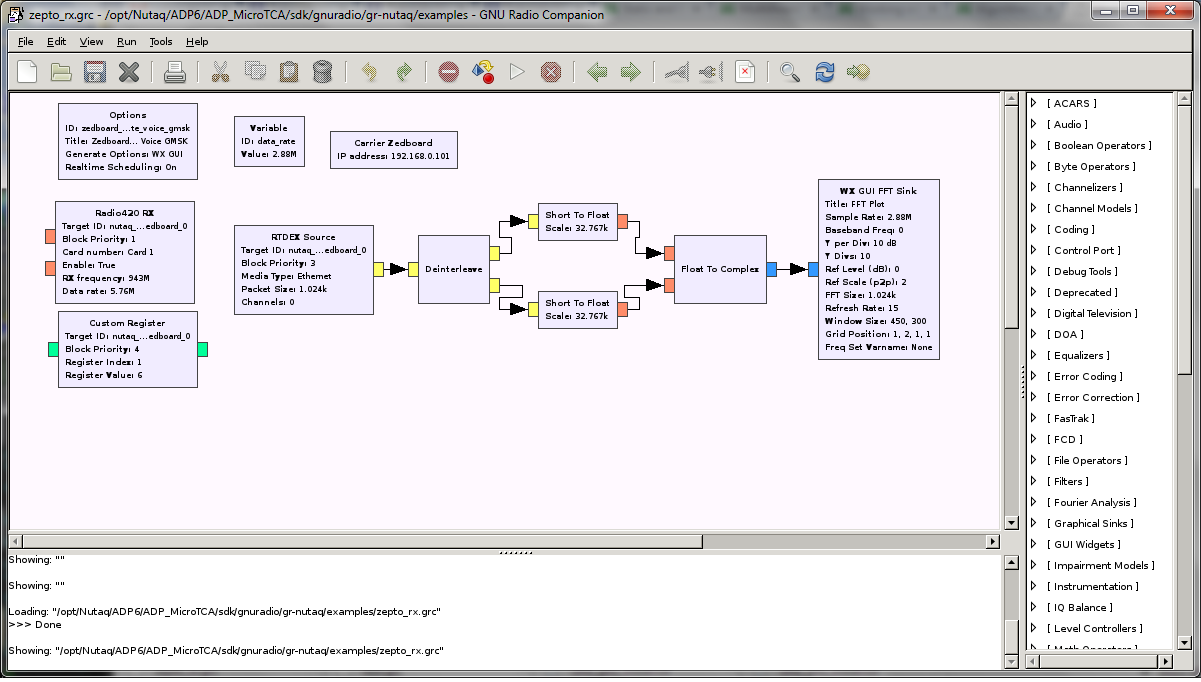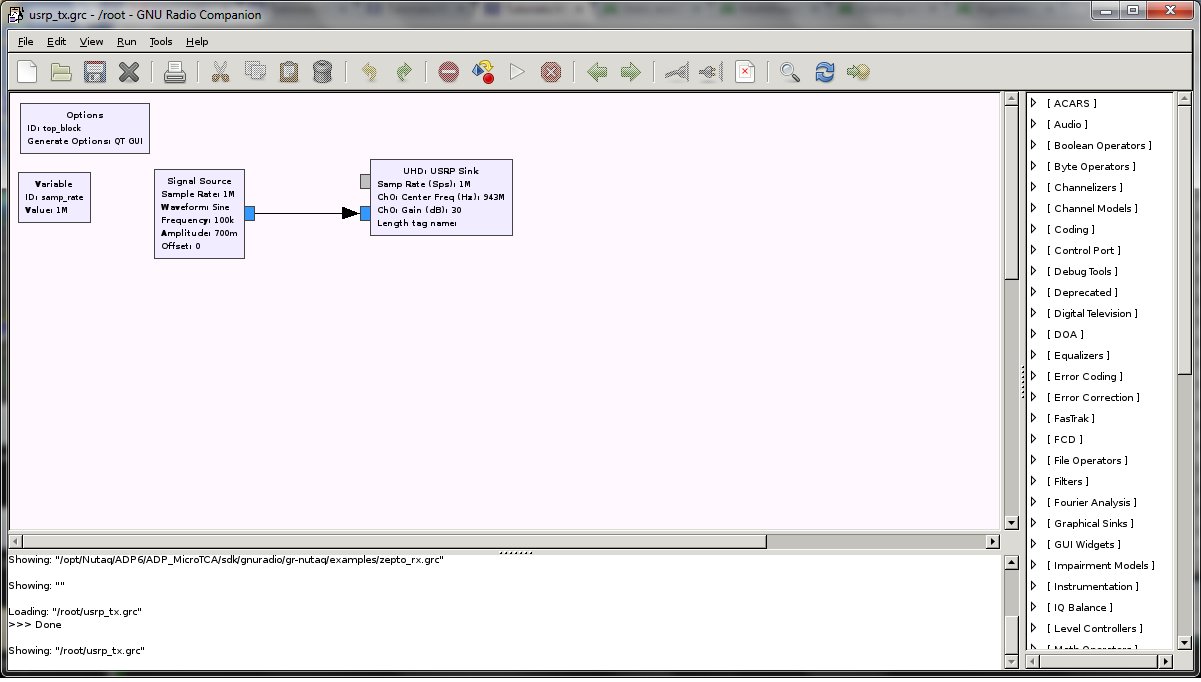Working with GNURadio and Nutaq ZeptoSDR
Table of Contents
- SDR Tutorials
Description
This example will demonstrate how to use GRC (GNU Radio Companion) with Nutaq's Zepto SDR.
Set up
- Before you can access the testbed, you need to make a reservation and get it approved by the reservation service. After receiving the reservation's confirmation (approval) email, load the ubuntu-14-04-64bit-sdr.ndz on two nodes and turn them on - one node with a Zepto SDR and the other node a USRP. For this example we'll use node20-13 and node20-20 which have a Zepto SDR and USRP, respectively:
ssh username@grid.orbit-lab.org omf load -i ubuntu-14-04-64bit-sdr.ndz -t [[20,13],[20,20] omf tell -a on -t [[20,13],[20,20]]
Once the nodes boot up, verify that the interface to each SDR is configured correctly.
Verify connection to Zepto SDR:
ifconfig eth2 192.168.0.1 netmask 255.255.255.0 mtu 9000 up ping 192.168.0.101
Verify connection to USRP:
ifconfig eth2 192.168.10.1 netmask 255.255.255.0 mtu 9000 up ping 192.168.10.2
Run the GRC scripts
Download the receiver zepto_rx.grc into node20-13 and open it with GNU Radio Companion.
root@node20-13:~# cd /opt/Nutaq/ADP6/ADP_MicroTCA/sdk/gnuradio/gr-nutaq/examples root@node20-13:/opt/Nutaq/ADP6/ADP_MicroTCA/sdk/gnuradio/gr-nutaq/examples# wget http://www.orbit-lab.org/raw-attachment/wiki/Tutorials/k0SDR/Tutorial10/zepto_rx.grc root@node20-13:/opt/Nutaq/ADP6/ADP_MicroTCA/sdk/gnuradio/gr-nutaq/examples# cd .. root@node20-13:/opt/Nutaq/ADP6/ADP_MicroTCA/sdk/gnuradio/gr-nutaq#sh launch_gnuradio_companion.sh &
A window should pop up similar to the following:
Next download the transmitting side usrp_tx.grc and open with GNU Radio Companion.
root@node20-20:~# wget http://www.orbit-lab.org/raw-attachment/wiki/Tutorials/k0SDR/Tutorial10/usrp_tx.grc root@node20-20:~# gnuradio-companion
A window should pop up similar to the following:
On both GRC windows click on the execute (side ways triangular) button to start both scripts. On the receiver side and spectrum window should open showing a carrier frequency. The details of the center frequency, power, gain, etc are in the GRC files - tweak a some of the parameters and validate by observing the spectrum.
Attachments (4)
- usrp_tx.grc (15.3 KB ) - added by 11 years ago.
- zepto_rx.grc (13.1 KB ) - added by 11 years ago.
- zepto_rx.png (130.8 KB ) - added by 11 years ago.
- usrp_tx.png (128.1 KB ) - added by 11 years ago.
Download all attachments as: .zip


